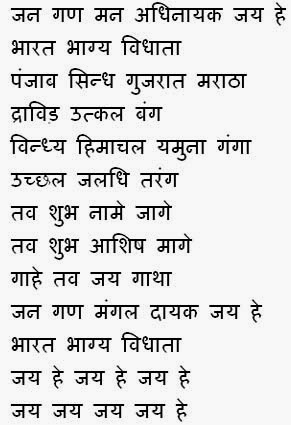National Anthem India
The national anthem of India, Jana-gana-mana, was composed
by the great poet Rabindranath Tagore and was adopted by the Constituent
Assembly of India on January 24th 1950. Jana-gana-mana was first sung on 27th
December, 1911 at the Calcutta Session of the Indian National Congress. The
songs, Jana-gana-mana, consists of five stanzas. The first stanza constitutes
the full version of the National Anthem.
National Animal
Tiger (Panthera Tigris, Linnaeus) is the national animal of
India. Tiger is also called the lord of Jungles. As the national animal of
India, tiger symbolizes India's wildlife wealth. The rare combination of grace,
strength, agility and enormous power has earned the tiger great respect and
high esteem.
National Bird
Peacock (Pavo cristatus), which is a symbol of grace, joy,
beauty and love is the national bird of India. Peacock occupies a respectable
position in Indian culture and is protected not only by religious sentiments
but also by parliamentary statute.
National Calendar
The national calendar of India is based on the Saka Era
with Chaitra as its first month and a normal year of 365 days. The national
calendar of India was adopted on March 22nd 1957. Dates of the Indian national
calendar have a permanent correspondence with the Gregorian calendar dates- 1
Chaitra falling on 22 March normally and on 21 March in leap year.
National Emblem India
The National Emblem of India has been taken from the
Sarnath Lion capital erected by Ashoka. The national emblem of India was
adapted by the Government of India on 26th January1950. In the National emblem
only three lions are visible and the fourth one is hidden from the view.
National Flag of India
The national flag of India is tricolor. It has deep saffron
color strip at the top, white in the middle and dark green at the bottom in
equal proportions. The width and length ratio of the National flag is two is to
three. In the centre of the white strip, there is a wheel in navy blue color to
indicate the Dharma Chakra, the wheel of law in the Sarnath Lion Capital.
National Flower
Lotus is the National flower of India. The Lotus symbolizes
spirituality, fruitfulness, wealth, knowledge and illumination. The most
important thing about lotus is that even after growing in murky water it is
untouched by its impurity. On the other hand the lotus symbolizes purity of
heart and mind.
National Fruit
Mango (Mangifera Indica) is
the National fruit of India. Mango is one of the most widely grown fruits of
the tropical countries. In India, mango is cultivated almost in all parts, with
the exception of hilly areas. Mango is a rich source of Vitamins A, C and D. In
India, we have hundreds of varieties of mangoes. They are of different sizes,
shapes and colors.
National Game
Hockey is the National Game of
India. Hockey has been played in India for time immemorial. There was a golden
period of Indian hockey when hockey stalwarts of India ruled the game. On the
international scenario there were no competitors to match the magical hands of
Indian hockey players.
National Song India
The National song of India is Vande Mataram. It was
composed by the famous poet, Bankim Chandra Chaterjee in the year 1875.
Rabindranath sang the National song (Vande Mataram) by setting a magnificent
tune and Shri Aurobindo interpreted the deep meaning of the song.
National Tree
Banyan is the National tree of India. The mighty banyan
tree commands a great presence in the rural setting of India. The very size of
the banyan tree makes it a habitat for a large number of creatures. For
centuries the banyan tree has been a central point for the village communities
of India.











No comments:
Post a Comment